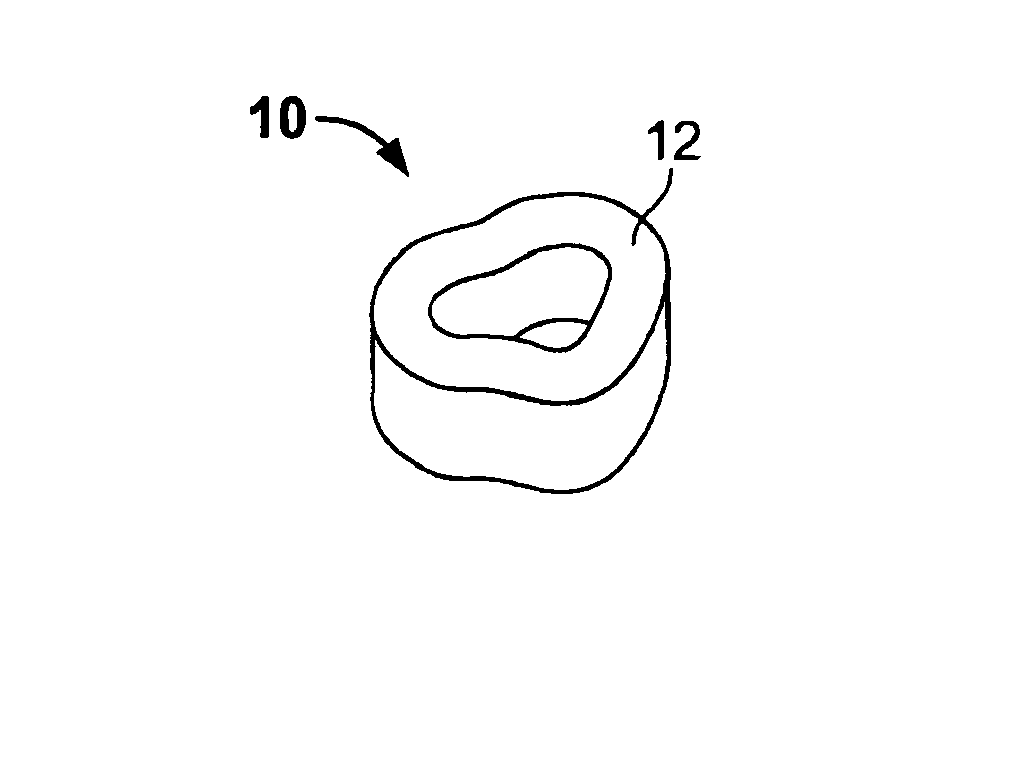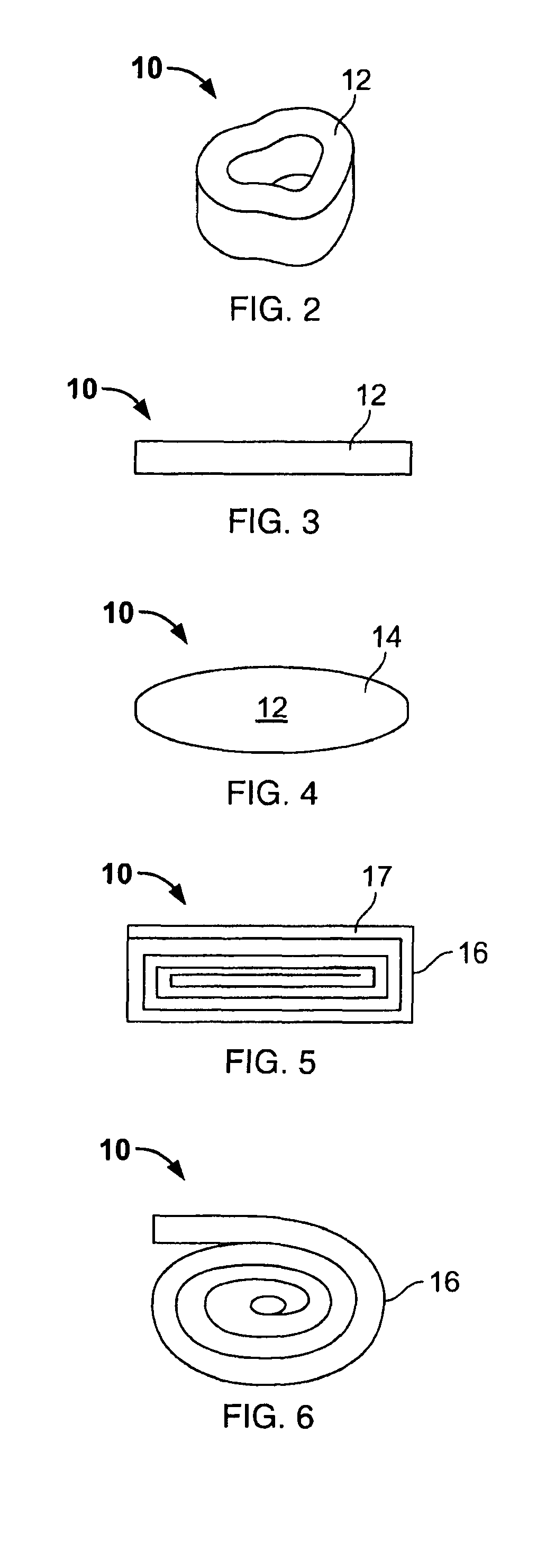Vertebral disc repair
a technology of vertebral discs and implants, applied in the field of shaped implants, can solve the problems of debilitating lower back and neck pain, np cannot no longer effectively transfer loads, af layers do not have the same ability to resist compressive loads, and experience atypical stresses, etc., to achieve the effect of reducing osteoinductivity
- Summary
- Abstract
- Description
- Claims
- Application Information
AI Technical Summary
Benefits of technology
Problems solved by technology
Method used
Image
Examples
Embodiment Construction
[0051]While the present invention is susceptible of embodiment in various forms as is shown in the drawings, and will hereinafter be described, a presently preferred embodiment is set forth with the understanding that the present disclosure is to be considered as an exemplification of the invention, and is not intended to limit the invention to the specific embodiments disclosed herein. The preferred embodiment and best mode of the invention for these purposes is shown in FIGS. 2 through 4.
[0052]The present invention is directed toward a spinal disc repair implant fashioned from demineralized human allograft bone and more particularly toward an implant 10 that includes at least one load bearing elastic body 12 sized for introduction into an intervertebral disc space as shown in FIG. 1. FIG. 1 shows a spinal column with numbered vertebrae separated by discs. The implants have shape memory and are configured to have a specific original shape that allows extensive deformation without p...
PUM
| Property | Measurement | Unit |
|---|---|---|
| diameter | aaaaa | aaaaa |
| thick | aaaaa | aaaaa |
| height | aaaaa | aaaaa |
Abstract
Description
Claims
Application Information
 Login to View More
Login to View More - R&D
- Intellectual Property
- Life Sciences
- Materials
- Tech Scout
- Unparalleled Data Quality
- Higher Quality Content
- 60% Fewer Hallucinations
Browse by: Latest US Patents, China's latest patents, Technical Efficacy Thesaurus, Application Domain, Technology Topic, Popular Technical Reports.
© 2025 PatSnap. All rights reserved.Legal|Privacy policy|Modern Slavery Act Transparency Statement|Sitemap|About US| Contact US: help@patsnap.com



